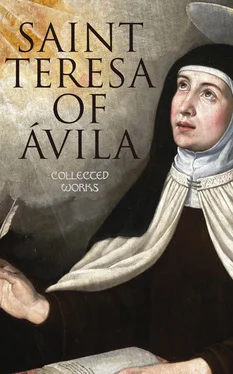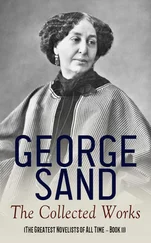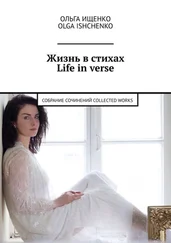St. Teresa wrote quite a number of different accounts of her life. The first, addressed to Father Juan de Padranos, S.J. 13and dated 1557, is now lost. The second, written for St. Peter of Alcantara, is Relation I. at the end of this volume; a copy of it, together with a continuation (Relation II.) was sent to Father Pedro Ibañez in 1562. It is somewhat difficult to admit that in the very same year she wrote another, more extensive, account to the same priest, which is generally called the "first" Life. At the end of the Life such as we have it now, St. Teresa wrote: "This book was finished in June, 1562," and Father Bañez wrote underneath: "This date refers to the first account which the Holy Mother Teresa of Jesus wrote of her life; it was not then divided into chapters. Afterwards she made this copy and inserted in it many things which had taken place subsequent to this date, such as the foundation of the monastery of St. Joseph of Avila." Elsewhere Father Bañez says: 14"Of one of her books, namely, the one in which she recorded her life and the manner of prayer whereby God had led her, I can say that she composed it to the end that her confessors might know her the better and instruct her, and also that it might encourage and animate those who learn from it the great mercy God had shown her, a great sinner as she humbly acknowledged herself to be. This book was already written when I made her acquaintance, her previous confessors having given her permission to that effect. Among these was a licentiate of the Dominican Order, the Reverend Father Pedro Ibañez, reader of Divinity at Avila. She afterwards completed and recast this book." These two passages of Bañez have led the biographers of the Saint to think that she wrote her Life twice, first in 1561 and the following year, completing it in the house of Doña Luisa de la Cerda at Toledo, in the month of June; and secondly between 1563 and 1565 at St. Joseph's Convent of Avila. They have been at pains to point out a number of places which could not have been in the "first" Life, but must have been added in the second 15; and they took it for granted that the letter with which the book as we now have it concludes, was addressed to Father Ibañez in 1562, when the Saint sent him the "first" Life. It bears neither address nor date, but from its contents I am bound to conclude that it was written in 1565, that it refers to the "second" Life, and that whomsoever it was addressed to, it cannot have been to Father Ibañez, who was already dead at the time. 16Saint Teresa asks the writer to send a copy of the book to Father Juan de Avila. Now we know from her letters that as late as 1568 this request had not been complied with, and that St. Teresa had to write twice to Doña Luisa for this purpose; 17but if she had already given these instructions in 1562, it is altogether incomprehensible that she did not see to it earlier, especially when the "first" Life was returned to her for the purpose of copying and completing it. The second reason which prevents me from considering this letter as connected with the "first" Life will be examined when I come to speak of the different ends the Saint had in view when writing her Life. It is more difficult to say to whom the letter was really addressed. The Reforma suggests Father Garcia de Toledo, Dominican, who bade the Saint write the history of the foundation of St. Joseph's at Avila 18and who was her confessor at that convent. It moreover believes that he it is to whom Chapter XXXIV. §§ 8–20 refers, and this opinion appears to me plausible. As to the latter point, Yepes thinks the Dominican at Toledo was Father Vicente Barron, the Bollandists offer no opinion, and Mr. Lewis, in his first edition gives first the one and then the other. If, as I think, Father Garcia was meant, the passage in Chapter XVI. § 10, beginning "O, my son," would concern him also, as well as several passages where Vuestra Merced --you, my Father--is addressed. For although the book came finally into the hands of Father Bañez, it was first delivered into those of the addressee of the letter.
Whether the previous paper was a mere "Relation," or really a first attempt at a "Life," 19there can be no dispute about its purpose: St. Teresa speaks of it in the following terms: "I had recourse to my Dominican father (Ibañez); I told him all about my visions, my way of prayer, the great graces our Lord had given me, as clearly as I could, and begged him to consider the matter well, and tell me if there was anything therein at variance with the Holy Writings, and give me his opinion on the whole matter." 20The account thus rendered had the object of enabling Father Ibañez to give her light upon the state of her soul. But while she was drawing it up, a great change came over her. During St. Teresa's sojourn at Toledo she became from a pupil an experienced master in Mystical knowledge. "When I was there a religious" (probably Father Garcia de Toledo) "with whom I had conversed occasionally some years ago, happened to arrive. When I was at Mass in a monastery of his Order, I felt a longing to know the state of his soul." 21Three times the Saint rose from her seat, three times she sat down again, but at last she went to see him in a confessional, not to ask for any light for herself, but to give him what light she could, for she wished to induce him to surrender himself more perfectly to God, and this she accomplished by telling him how she had fared since their last meeting. No one who reads this remarkable chapter can help being struck by the change that has come over Teresa: the period of her schooling is at an end, and she is now the great teacher of Mystical theology. Her humility does not allow her to speak with the same degree of openness upon her achievements as she did when making known her failings, yet she cannot conceal the Gift of Wisdom she had received and the use she made of it.
St. Teresa's development, if extraordinary considering the degree of spirituality she reached, was nevertheless gradual and regular. With her wonderful power of analysis, she has given us not only a clear insight into her interior progress, but also a sketch of the development of her understanding of supernatural things. "It is now ( i.e. , about the end of 1563) some five or six years, I believe, since our Lord raised me to this state of prayer, in its fulness, and that more than once,--and I never understood it, and never could explain it; and so I was resolved, when I should come thus far in my story, to say very little or nothing at all." 22In the following chapter she adds: "You, my father, will be delighted greatly to find an account of the matter in writing, and to understand it; for it is one grace that our Lord gives grace; and it is another grace to understand what grace and what gift it is; and it is another and further grace to have the power to describe and explain it to others. Though it does not seem that more than the first of these--the giving of grace--is necessary, it is a great advantage and a great grace to understand it." 23These words contain the clue to much that otherwise would be obscure in the life of our Saint: great graces were bestowed upon her, but at first she neither understood them herself nor was she able to describe them. Hence the inability of her confessors and spiritual advisers to guide her. Her natural gifts, great though they were, did not help her much. "Though you, my father, may think that I have a quick understanding, it is not so; for I have found out in many ways that my understanding can take in only, as they say, what is given it to eat. Sometimes my confessor used to be amazed at my ignorance: and he never explained to me--nor, indeed, did I desire to understand--how God did this, nor how it could be. Nor did I ever ask." 24At first she was simply bewildered by the favours shown her, afterwards she could not help knowing, despite the fears of over anxious friends, that they did come from God, and that so far from imperilling her soul made a different woman of her, but even then she was not able to explain to others what she experienced in herself. But shortly before the foundation of St. Joseph's convent she received the last of the three graces mentioned above, the Gift of Wisdom, and the scene at Toledo is the first manifestation of it.
Читать дальше












